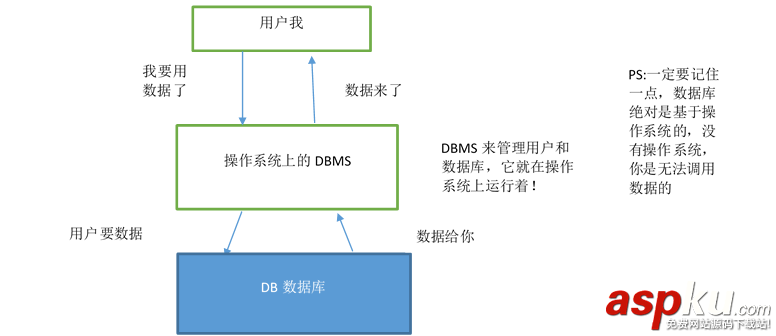一、獲取表的Schema信息:
1). 動態(tài)創(chuàng)建表。
2). 根據(jù)sqlite3提供的API,獲取表字段的信息,如字段數(shù)量以及每個字段的類型。
3). 刪除該表。
見以下代碼及關鍵性注釋:
#include <sqlite3.h>
#include <string>
using namespace std;
void doTest()
{
sqlite3* conn = NULL;
//1. 打開數(shù)據(jù)庫
int result = sqlite3_open("D:/mytest.db",&conn);
if (result != SQLITE_OK) {
sqlite3_close(conn);
return;
}
const char* createTableSQL =
"CREATE TABLE TESTTABLE (int_col INT, float_col REAL, string_col TEXT)";
sqlite3_stmt* stmt = NULL;
int len = strlen(createTableSQL);
//2. 準備創(chuàng)建數(shù)據(jù)表,如果創(chuàng)建失敗,需要用sqlite3_finalize釋放sqlite3_stmt對象,以防止內(nèi)存泄露。
if (sqlite3_prepare_v2(conn,createTableSQL,len,&stmt,NULL) != SQLITE_OK) {
if (stmt)
sqlite3_finalize(stmt);
sqlite3_close(conn);
return;
}
//3. 通過sqlite3_step命令執(zhí)行創(chuàng)建表的語句。對于DDL和DML語句而言,sqlite3_step執(zhí)行正確的返回值
//只有SQLITE_DONE,對于SELECT查詢而言,如果有數(shù)據(jù)返回SQLITE_ROW,當?shù)竭_結(jié)果集末尾時則返回
//SQLITE_DONE。
if (sqlite3_step(stmt) != SQLITE_DONE) {
sqlite3_finalize(stmt);
sqlite3_close(conn);
return;
}
//4. 釋放創(chuàng)建表語句對象的資源。
sqlite3_finalize(stmt);
printf("Succeed to create test table now./n");
//5. 構造查詢表數(shù)據(jù)的sqlite3_stmt對象。
const char* selectSQL = "SELECT * FROM TESTTABLE WHERE 1 = 0";
sqlite3_stmt* stmt2 = NULL;
if (sqlite3_prepare_v2(conn,selectSQL,strlen(selectSQL),&stmt2,NULL) != SQLITE_OK) {
if (stmt2)
sqlite3_finalize(stmt2);
sqlite3_close(conn);
return;
}
//6. 根據(jù)select語句的對象,獲取結(jié)果集中的字段數(shù)量。
int fieldCount = sqlite3_column_count(stmt2);
printf("The column count is %d./n",fieldCount);
//7. 遍歷結(jié)果集中每個字段meta信息,并獲取其聲明時的類型。
for (int i = 0; i < fieldCount; ++i) {
//由于此時Table中并不存在數(shù)據(jù),再有就是SQLite中的數(shù)據(jù)類型本身是動態(tài)的,所以在沒有數(shù)據(jù)時
//無法通過sqlite3_column_type函數(shù)獲取,此時sqlite3_column_type只會返回SQLITE_NULL,
//直到有數(shù)據(jù)時才能返回具體的類型,因此這里使用了sqlite3_column_decltype函數(shù)來獲取表聲
//明時給出的聲明類型。
string stype = sqlite3_column_decltype(stmt2,i);
stype = strlwr((char*)stype.c_str());
//下面的解析規(guī)則見該系列的“數(shù)據(jù)類型-->1. 決定字段親緣性的規(guī)則”部分,其鏈接如下:
//http://www.survivalescaperooms.com/article/65424.htm
if (stype.find("int") != string::npos) {
printf("The type of %dth column is INTEGER./n",i);
} else if (stype.find("char") != string::npos
|| stype.find("text") != string::npos) {
printf("The type of %dth column is TEXT./n",i);
} else if (stype.find("real") != string::npos
|| stype.find("floa") != string::npos
|| stype.find("doub") != string::npos ) {
printf("The type of %dth column is DOUBLE./n",i);
}
}
sqlite3_finalize(stmt2);
//8. 為了方便下一次測試運行,我們這里需要刪除該函數(shù)創(chuàng)建的數(shù)據(jù)表,否則在下次運行時將無法
//創(chuàng)建該表,因為它已經(jīng)存在。
const char* dropSQL = "DROP TABLE TESTTABLE";
sqlite3_stmt* stmt3 = NULL;
if (sqlite3_prepare_v2(conn,dropSQL,strlen(dropSQL),&stmt3,NULL) != SQLITE_OK) {
if (stmt3)
sqlite3_finalize(stmt3);
sqlite3_close(conn);
return;
}
if (sqlite3_step(stmt3) == SQLITE_DONE) {
printf("The test table has been dropped./n");
}
sqlite3_finalize(stmt3);
sqlite3_close(conn);
}
int main()
{
doTest();
return 0;
}
//輸出結(jié)果為:
//Succeed to create test table now.
//The column count is 3.
//The type of 0th column is INTEGER.
//The type of 1th column is DOUBLE.
//The type of 2th column is TEXT.
//The test table has been dropped.
二、常規(guī)數(shù)據(jù)插入:
1). 創(chuàng)建測試數(shù)據(jù)表。
2). 通過INSERT語句插入測試數(shù)據(jù)。
3). 刪除測試表。
見以下代碼及關鍵性注釋:
#include <sqlite3.h>
#include <string>
#include <stdio.h>
using namespace std;
void doTest()
{
sqlite3* conn = NULL;
//1. 打開數(shù)據(jù)庫
int result = sqlite3_open("D:/mytest.db",&conn);
if (result != SQLITE_OK) {
sqlite3_close(conn);
return;
}
const char* createTableSQL =
"CREATE TABLE TESTTABLE (int_col INT, float_col REAL, string_col TEXT)";
sqlite3_stmt* stmt = NULL;
int len = strlen(createTableSQL);
//2. 準備創(chuàng)建數(shù)據(jù)表,如果創(chuàng)建失敗,需要用sqlite3_finalize釋放sqlite3_stmt對象,以防止內(nèi)存泄露。
if (sqlite3_prepare_v2(conn,createTableSQL,len,&stmt,NULL) != SQLITE_OK) {
if (stmt)
sqlite3_finalize(stmt);
sqlite3_close(conn);
return;
}
//3. 通過sqlite3_step命令執(zhí)行創(chuàng)建表的語句。對于DDL和DML語句而言,sqlite3_step執(zhí)行正確的返回值
//只有SQLITE_DONE,對于SELECT查詢而言,如果有數(shù)據(jù)返回SQLITE_ROW,當?shù)竭_結(jié)果集末尾時則返回
//SQLITE_DONE。
if (sqlite3_step(stmt) != SQLITE_DONE) {
sqlite3_finalize(stmt);
sqlite3_close(conn);
return;
}
//4. 釋放創(chuàng)建表語句對象的資源。
sqlite3_finalize(stmt);
printf("Succeed to create test table now./n");
int insertCount = 10;
//5. 構建插入數(shù)據(jù)的sqlite3_stmt對象。
const char* insertSQL = "INSERT INTO TESTTABLE VALUES(%d,%f,'%s')";
const char* testString = "this is a test.";
char sql[1024];
sqlite3_stmt* stmt2 = NULL;
for (int i = 0; i < insertCount; ++i) {
sprintf(sql,insertSQL,i,i * 1.0,testString);
if (sqlite3_prepare_v2(conn,sql,strlen(sql),&stmt2,NULL) != SQLITE_OK) {
if (stmt2)
sqlite3_finalize(stmt2);
sqlite3_close(conn);
return;
}
if (sqlite3_step(stmt2) != SQLITE_DONE) {
sqlite3_finalize(stmt2);
sqlite3_close(conn);
return;
}
printf("Insert Succeed./n");
}
sqlite3_finalize(stmt2);
//6. 為了方便下一次測試運行,我們這里需要刪除該函數(shù)創(chuàng)建的數(shù)據(jù)表,否則在下次運行時將無法
//創(chuàng)建該表,因為它已經(jīng)存在。
const char* dropSQL = "DROP TABLE TESTTABLE";
sqlite3_stmt* stmt3 = NULL;
if (sqlite3_prepare_v2(conn,dropSQL,strlen(dropSQL),&stmt3,NULL) != SQLITE_OK) {
if (stmt3)
sqlite3_finalize(stmt3);
sqlite3_close(conn);
return;
}
if (sqlite3_step(stmt3) == SQLITE_DONE) {
printf("The test table has been dropped./n");
}
sqlite3_finalize(stmt3);
sqlite3_close(conn);
}
int main()
{
doTest();
return 0;
}
//輸出結(jié)果如下:
//Succeed to create test table now.
//Insert Succeed.
//Insert Succeed.
//Insert Succeed.
//Insert Succeed.
//Insert Succeed.
//Insert Succeed.
//Insert Succeed.
//Insert Succeed.
//Insert Succeed.
//Insert Succeed.
//The test table has been dropped.



















